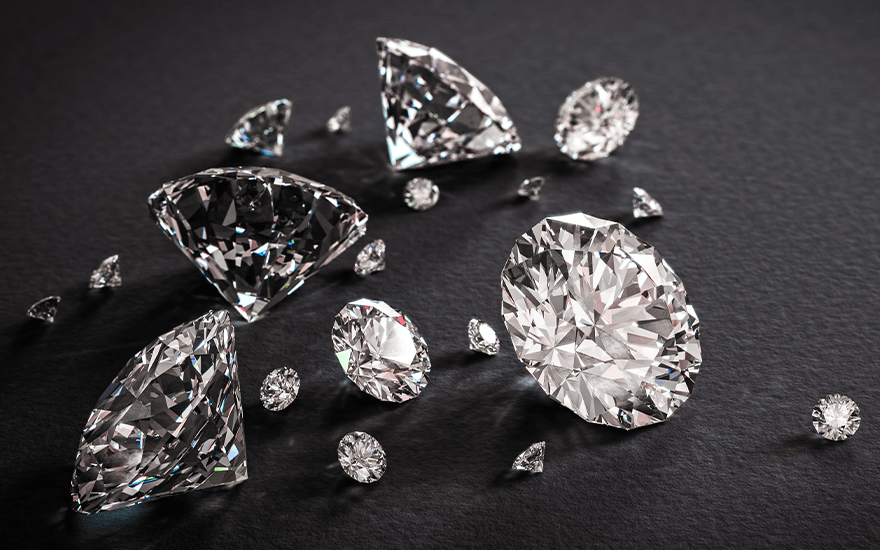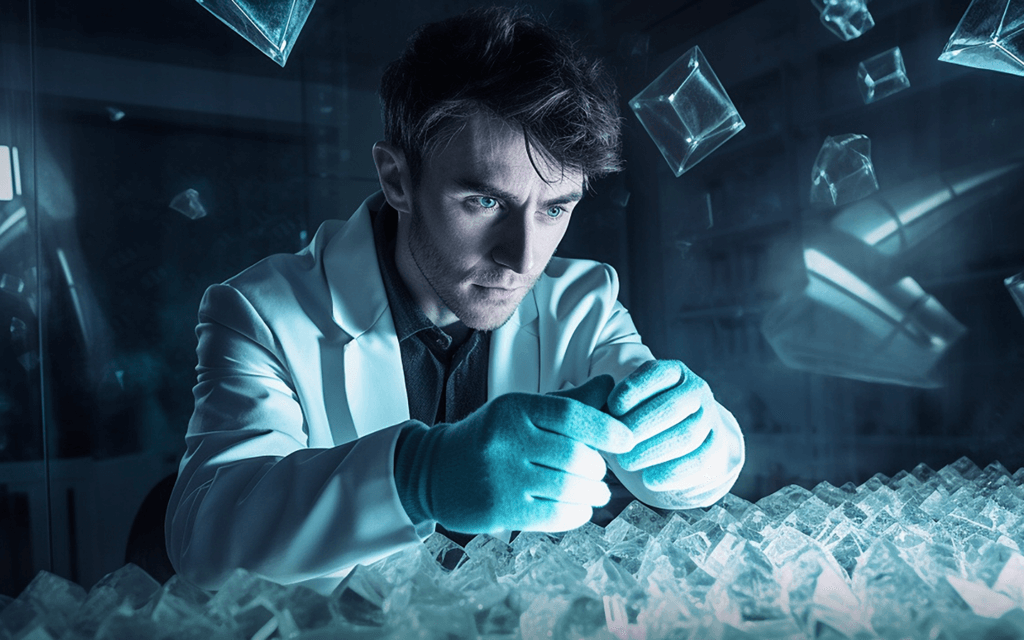Lab-grown diamonds are fast becoming ubiquitous because of the fact they’re cost-effective and sustainable. But is the choice to drive out their mined counterparts from existence a clear-cut venture?
Indistinguishable from mined stones and weighing in at half the price tag, lab-grown diamonds now adorn a corner of jewelers the world over.
With identical characteristics, the FTC made disclosure of synthetic manufacturing obligatory in 2018 after removing the word ‘natural’ from their definition of a diamond—deeming lab-grown varieties to have all the same chemical, physical, and optical properties.
The advent of lab-grown diamonds is somewhat of a revolution, to say the least (especially when you consider the environmental impacts of mined diamonds.
While things are indeed looking bright for lab-grown diamonds, will they really hold the keys to the jewelry industry?
Let’s dig a little deeper.

Lab-grown diamonds: the process
Kinder to the planet as well as our bank balance (double bonus), is the ‘lab-grown a full-blown?’
Jerry Taylor, a GIA graduate gemologist and founder of Lab Grown Source, the first B2B marketplace dedicated to the trade of lab-grown diamonds, provides some clarity.
Pressure. Pressure. Pressure
“There are two major ways that lab-grown diamonds are made,” begins gemologist Jerry “Chemical Vapor Deposition (CVD) and High Pressure, High Temperature (HPHT),” who explains that both processes start with a seed crystal that is either infused with carbon-rich gas inside a growth chamber or packed in a salt pack with graphite and then placed inside a press.
Diamonds at warp speed
Both methods are complete in just a couple of weeks. Shaving a cool billion years or so off the formation period does seem to tarnish the romance of a stone that materialized in the earth’s mantle for a quarter of the earth’s age. But, the laboratory-assisted version does offer ethical advantages—not only from an environmental stance but a humanitarian one too.
“Many who are entrenched in the mined diamond industry argue that lab-grown diamonds are taking jobs away from some of the poorest and most vulnerable people,” he says. “But I would argue that these exploited workers are still living in some of the poorest conditions, doing backbreaking work for only a few dollars a day, while those at the top are adding billions of dollars of profit a year to their coffers.”
Lab-grown diamonds: A question of ethics and value
Lab-grown gems are clearly the kinder cut ethically and for our wallets, too. But how does the synesthetic variety stand up in terms of depreciation?
“An interesting fact about the supply of mined diamonds is that they’ve always been controlled by a few large monopolies,” Jerry reveals. “These conglomerates have perpetuated a myth that diamonds are rare when in fact, they are not. By controlling the supply, they can artificially increase the selling price and extract exorbitant profits year after year as a result.
“Lab-grown diamonds, on the other hand, are not controlled by these monopolies and therefore sell for much less. Ironically, there are millions more mined diamonds than lab-grown in the world now, and at the rate of current mining, that won’t change anytime soon.
So it’s not the ‘finite’ nature of mined diamonds that makes them cost more, but merely the organizations that control their supply and set the prices.
“Diamonds are only a sound investment for wholesale brokers or retail jewelers who can sell them quickly for a profit. For the end, consumer, diamonds have never been, and most likely never will be, a sound investment,” he warns. “Unfortunately, the idea is another myth perpetuated by those profiting from the large-scale sale of diamonds.
Mined vs lab-grown diamonds: What’s the best investment?
“A helpful comparison between mined and lab-grown diamonds is to consider the amount of loss you would incur if you had to resell.
An average price online for a 1.5ct G color, VS2 oval shape mined diamond (GIA graded) is $11,000. The same quality of lab-grown diamond is $2,7001.
Let’s say you get nothing for the lab-grown diamond (which wouldn’t happen)—and 70% of what you paid for the mined diamond (much more than you’d get).
You would lose $2,700 on the lab-grown diamond and $3,300 on the mined diamond,” explains Jerry. “So, buying the lab-grown diamond is still a better financial decision.
“In summary, don’t believe the gimmick that diamonds are an investment whether you’re buying lab-grown or mined diamonds.”
You can delve deeper into the world of lab-grown diamonds at brilliantearth.com






